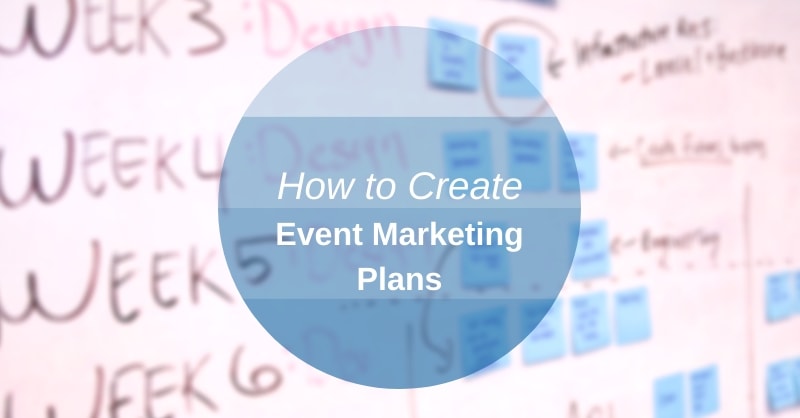0800 072 7742
0800 072 7742

When you’re exhibiting at an event or attending a conference, you’ll want to ensure you get the most out of your exhibition stand, both in terms of money spent and the time committed.
By drawing up an event marketing plan, you will get best value by attracting potential customers to your stand or setting up meetings in advance, engaging with them on-site and then by following up your new leads when the event is over.
In this guide, we ask executives what steps they take to build an effective event marketing plan.

Before doing anything else, you must evaluate your specific goals from exhibiting or attending in the first place. It might be new sales, brand awareness or even driving website traffic, but whatever your goals, you should make them SMART, that is:
Once you have those in place, you should go about planning how you’ll reach out to your prospects.
You might well have an eye-catching exhibition stand space, but that alone might not be enough to attract potential clients. Instead, it’s much better to let them know in advance that you will be at an event and looking to connect.
Henry Lewington, Managing Director of digital marketing agency Barracuda, disucsses how communication before an event taking place is so important.
“We have two approaches. We promote on the media we own, like our social channels and website, and we attach a small targeted spend to promote to the audience who we believe will be attending the event.”
The strategy was echoed by Haris Dacic, marketing and digital consultant at Green River Media, who promotes event attendance:
"To attract potential prospects to come and speak to our sales and technology teams”.
Nimlok designs and builds custom exhibition stands, so they know a thing or two about how to make events successful. Head of marketing, Mel Wills talks about how they run their events:
“If it’s a trade show we’re attending, we still let people know we are there to get footfall to the stand and to have an excuse to touch base and make some noise.”
Reaching out to potential clients ahead of your event is just the start. Your event marketing plan should then focus on comms and marketing during and afterwards, too. Using event-specific social media hashtags, for example, will make you visible to those attendees searching for event news.
You might also make plans to engage with visitors at your stand by adding fun or interactive experiences, like a Formula One car simulator, or by giving out some freebies. You’ll also want to follow up with those prospects once everyone has packed up and gone home.
Haris explains:
“We use social channels, including LinkedIn and Facebook, to shout out about our attendance, and we give branded freebies to visitors to keep after the event.
"For example, at the last one we attended, our freebies included branded Panoflex sync and charging cables, shopping bags, pens and planners to our visitors.”
Barracuda and Nimlok are also active on social media during an event. Henry Lewington added:
“After the event, we follow up by email with all event and stand attendees.”
Mel Wills concluded:
“We always use promotional items and incentivise our interactions at the show with high-value prizes, which also allows us to follow up. We also follow up with emails, social and telemarketing calls.”
There’s no one-way-fits-all method to follow up with prospective clients, but there are two wrong ways – spamming them or ignoring them altogether.
How much importance you give to the before, during or after sections of your event marketing plan will depend on the type of event and your business.
For Henry Lewington and Barracuda, it’s the before and after, because you need to drive footfall in the first place and then contact them afterwards to try and close business.
“New business is our prime objective,” he explained, “but we also see value in awareness being raised.”
Green River Media believes they must concentrate on all three areas, although:
“Pre-communication is least important, during and post are the most important, especially when following up with contacts post-event” according to Haris.
He added:
“We believe that the key benefit at the event comes from the ability for potential clients to speak to our sales and technical teams and be able to get a first-hand picture of what we can do for them.
“We give freebies to ensure our brand awareness post-event and follow-up to remain in contact with the potential clients.”
Nimlok put a similar emphasis on the make-up of their event marketing plan before, during and after sections. Mel Wills explained:
“They are all important, but the least important of the three when attending a trade show is the pre-show campaign.”
However, if your business is putting on the event, then pre-show planning becomes critical since you need to get bodies through the door in the first place.
In this case, you must utilise all your owned communication channels and then use PR or paid advertising on top to spread the word further afield.
It’s no use making an event marketing plan if you don’t evaluate the results once the event is over.
Go back to your SMART goals. Measure how well you did on each, then evaluate where you could have done better.
Only by scrutinising your performance can you hope to improve your ROI at the next event.